5. Treatment of DS-TB using the 4-month 2HRZ(E)/2HR regimen
As in adults, TB treatment in children and adolescents includes an intensive phase of 2 months followed by a continuation phase of 2–4 months. In the intensive phase, tubercle bacilli are rapidly killed to prevent disease progression and transmission, and the development of drug resistance. In the continuation phase, dormant bacilli are eliminated to effect cure and prevent relapse. The choice of TB treatment regimen depends on the severity of disease and age.

 Feedback
Feedback